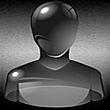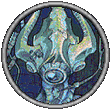| 03-08-14, 03:27 AM | #1 |
|
Help with a table issue
__________________
if (sizeof(workload) > sizeof(brain_capacity)) { die('System Overload'); } |
|

|
| 03-08-14, 06:18 AM | #2 |
|
Last edited by Duugu : 03-08-14 at 06:21 AM. |
|

|
| 03-08-14, 06:57 AM | #3 |
|
__________________
if (sizeof(workload) > sizeof(brain_capacity)) { die('System Overload'); } |
|

|
| 03-08-14, 07:21 AM | #4 |

|
| 03-08-14, 08:06 AM | #5 | |
|
A Fallenroot Satyr
Join Date: Sep 2012
Posts: 22
|
Last edited by Oppugno : 03-08-14 at 08:19 AM. Reason: Clarified some stuff. |
|

|
| 03-08-14, 08:15 AM | #6 |
|
__________________
Retired author of too many addons. Message me if you're interested in taking over one of my addons. Donít message me about addon bugs or programming questions. |
|

|
| 03-08-14, 10:09 AM | #7 |
|
__________________
if (sizeof(workload) > sizeof(brain_capacity)) { die('System Overload'); } |
|

|
| 03-08-14, 11:14 AM | #8 | |
|
A Fallenroot Satyr
Join Date: Sep 2012
Posts: 22
|
||

|
| 03-08-14, 11:16 AM | #9 |
|
__________________
if (sizeof(workload) > sizeof(brain_capacity)) { die('System Overload'); } |
|

|
| 03-08-14, 12:09 PM | #10 | |
|
A Fallenroot Satyr
Join Date: Sep 2012
Posts: 22
|
||

|
| 03-09-14, 10:33 AM | #11 |
|
__________________
if (sizeof(workload) > sizeof(brain_capacity)) { die('System Overload'); } |
|

|
| 03-09-14, 05:56 PM | #12 | |
|
A Fallenroot Satyr
Join Date: Sep 2012
Posts: 22
|
||

|
| 03-10-14, 03:54 AM | #13 |
|
__________________
if (sizeof(workload) > sizeof(brain_capacity)) { die('System Overload'); } Last edited by Caellian : 03-10-14 at 05:15 PM. |
|

|
| 03-10-14, 05:16 PM | #14 | |
|
A Fallenroot Satyr
Join Date: Sep 2012
Posts: 22
|
Last edited by Oppugno : 03-10-14 at 05:25 PM. |
|

|
| 03-10-14, 05:17 PM | #15 |
|
__________________
if (sizeof(workload) > sizeof(brain_capacity)) { die('System Overload'); } |
|

|
| 03-10-14, 05:34 PM | #16 | |
|
A Fallenroot Satyr
Join Date: Sep 2012
Posts: 22
|
||

|
| 03-11-14, 06:04 AM | #17 |

|
| 03-11-14, 06:22 PM | #18 |

|
| 03-13-14, 02:47 AM | #19 |
|
__________________
if (sizeof(workload) > sizeof(brain_capacity)) { die('System Overload'); } |
|

|
| 03-19-14, 02:06 PM | #20 |

|





 Linear Mode
Linear Mode

